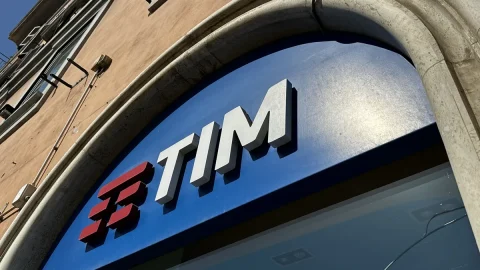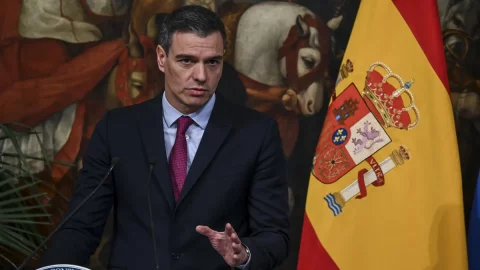India's GDP rebounded by 8,2% on an annual basis in 2021, after a heavy contraction of 7,0% in 2020. This is what emerges from a report by atradius, according to which the closures and business interruptions related to the Coronavirus still hampered growth in the first half, but with the easing of restrictions, economic activity has started to grow again since the second half of the year. Lower interest rates, higher government spending and an acceleration in vaccinations have supported domestic consumption.
The political challenges for the government
The weakening economic trend of recent years, the increase in fuel prices and the growing dissatisfaction with the government's response to the pandemic represent the political challenges for the current administration. As a sign of growing political pressure, after the farmers' demonstrations Modi announced last November 19 that he would repeal the controversial agricultural reform laws, which aimed to liberalize markets. However, a fragmented opposition and limited national appeal for most opposition parties mean the BJP is unlikely to see a serious challenge. In the meantime, India-China relations remain tense between border issues and India's renewed commitment to the Quadrilateral Security Dialogue that includes the US and strengthened defense ties with Australia and Japan. On the trade front, India is unlikely to join the RCEP due to concerns of a huge influx of imports from more competitive regional counterparts. Instead, India seeks to revive trade talks with the EU and a potential free trade deal with the US.
India: economic forecasts for 2022
According to forecasts, in 2022 India's GDP to grow by around 8%. However, despite the government's goal to complete the vaccination rollout by the end of 2021, as of December 31, only 64% of India's adult population was fully vaccinated. In the coming months, the momentum of the country's economic growth will depend on the ability to contain the spread of the coronavirus and continue the vaccination process. Analysts expect that domestic consumption growth gains momentum after the second quarter of 2022, given that by then it is estimated that approximately 80% of the population will be fully vaccinated. This should support private consumption, which is expected to grow by more than 10% this year. Investments grew by more than 16% in 2021 and are expected to increase further in 2022, by around 7%. Be careful though still weakened balance sheets of companies and financial institutions, which represent a real risk of slowdown.
Before the pandemic, private domestic demand had declined on the back of the reforms implemented, including the de-monetization of banknotes in 2016 and the implementation of the Goods and Services Tax (GST) in 2017, leading the GDP growth to slow down from fiscal year 2017 and reach 4% in the 2019 fiscal year. Coface believes that the recovery of both consumption and investment will remain gradual despite persistent downside risks. On the supply side, manufacturing (16% of GDP) rebounded solidly with output already returning to pre-pandemic level, while services (50% of GDP) were resilient, led by software services (5% of GDP). GDP).
The public budget
Government spending has increased due to the pandemic, e the budget deficit will increase to about 7% of GDP in the 2021/2022 fiscal year (April 2021-March 2022). We talk about a fiscal consolidation program of the government for this year, albeit gradually. Revenue from lost investment, monetization of public sector assets and an expanded tax base are likely to help reduce the deficit to 6% of GDP in fiscal 2022/2023. In 2021, inflation has fluctuated within the RBI's target range of 2% to 6%, allowing it to maintain its accommodative monetary policy. However, soaring global energy prices and ongoing supply disruptions push up input prices. This could prompt the RBI to moderately raise interest rates later in the year.
The rupee
In this regard, to support the economy during the pandemic, the Reserve Bank of India (RBI) has taken steps to support the exchange rate and provide liquidity to the market. The procedures for offering new loans and classifying existing loans have been simplified. It is expected a slight depreciation of the rupee against the dollar in 2022 and 2023, due to relatively high inflation (expected 5% in 2022). A gradual strengthening of the dollar will also contribute to this depreciation (in view of a more restrictive monetary policy by the US Federal Reserve). At the same time, large foreign exchange reserves will support the Indian currency to avoid excessive volatility. New Delhi's liquidity situation remains good, with international reserves nearly XNUMX months of import coverage, amply covering both external financing needs and short-term external debt.
Banks in India under pressure
Nevertheless, India's banking sector remains under pressure due to a rather large volume of non-performing assets (NPA). These are concentrated in public banks, which represent more than 70% of the banking sector. NPAs grew in 2020 due to the negative impact of the pandemic. To strengthen the sector and improve capital adequacy, ten public sector banks were merged into four with effect from 1 April 2020. The Ministry of Finance has disbursed around €1,6 billion into four public sector banks which are under RBI corrective action, in order to improve their financial health. The gross NPA ratio of Indian banks has improved to 6,97% at the end of September 2021, compared to 7,32% at the end of June 2021 and 7,36% at the end of September 2020. However, monetary tightening in 2022 could curb the ability of companies to meet their debtsnegatively affecting the profitability of banks.
Read also - New Delhi launches digital rupee and taxes crypto profits





